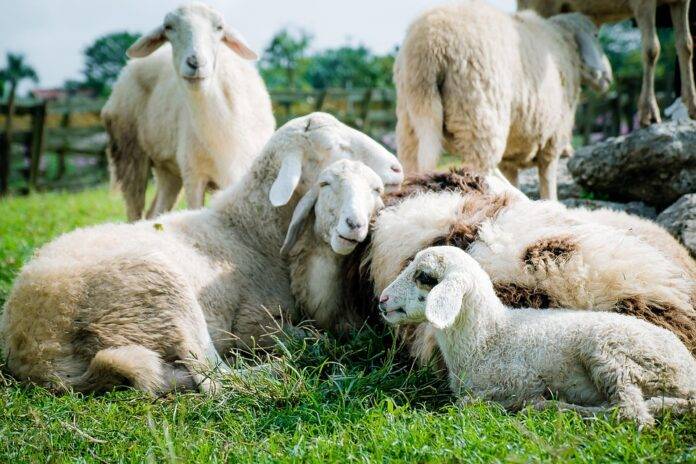Introduction
The global sheep meat market has seen significant transformations in recent years, with an increasing focus on alternative sheep meat products. This report examines the top ten countries driving investments in this sector, highlighting their market dynamics, financial trends, and the volumes of sheep meat produced and consumed. With changing consumer preferences and a growing awareness of sustainability, these nations are at the forefront of reimagining the sheep meat industry.
1. Australia
Australia is the world’s largest producer of sheep meat, contributing nearly 25% of the global supply. In 2022, Australia produced approximately 450,000 metric tons of lamb and 100,000 metric tons of mutton. The country’s focus on premium alternative sheep meat products, such as organic and grass-fed options, has attracted significant investment. The Australian sheep meat market is projected to grow at a CAGR of 4.5% from 2023 to 2030, driven by both domestic and international demand.
Financial Overview
In 2022, Australia’s sheep meat export revenue reached AUD 3 billion, largely due to its high-quality products being sought after in markets like the Middle East and Asia. Investments in sustainable farming practices and technology have also increased, with over AUD 200 million allocated to research and development in 2023 alone.
2. New Zealand
New Zealand is renowned for its high-quality lamb, with production levels around 400,000 metric tons in 2022. The country has been a pioneer in the alternative sheep meat market, focusing on grass-fed, free-range, and organic products. Increased investments in branding and marketing strategies are helping New Zealand expand its global reach.
Market Trends
In 2023, the New Zealand sheep meat market is expected to grow by 5% annually, with exports to Asia and North America increasing. The country’s commitment to sustainability and reducing carbon footprints has also led to a rise in consumer interest, further driving investments.
3. United States
The United States has emerged as a notable player in the alternative sheep meat market, with production reaching approximately 170,000 metric tons in 2022. The growing popularity of gourmet and specialty meat products has catalyzed investments in the sheep farming sector.
Financial Insights
In 2022, the U.S. sheep meat market generated around USD 1.1 billion in revenue. This figure is expected to grow by 6% annually as more consumers turn to alternative sheep meat options for health and ethical considerations.
4. United Kingdom
The United Kingdom is known for its traditional lamb products, with production levels hovering around 300,000 metric tons. In recent years, the UK has seen a surge in interest in alternative sheep meat products, particularly in urban areas where consumers are more health-conscious.
Investment Landscape
The UK sheep meat industry is projected to grow by 3.5% annually, with investments focusing on improving livestock welfare and sustainable farming techniques. The market value reached approximately GBP 1.2 billion in 2022.
5. China
China has rapidly become one of the largest consumers of sheep meat, with a consumption rate of nearly 1.2 million metric tons in 2022. The country’s growing middle class is driving demand for high-quality alternative sheep meat products.
Market Dynamics
Chinese investments in sheep farming are expected to increase significantly, with projections of a 7% annual growth rate. In 2022, the sheep meat market in China was valued at approximately CNY 100 billion.
6. Brazil
Brazil is emerging as a key player in the sheep meat market, with production levels around 70,000 metric tons in 2022. The country’s diverse agricultural landscape allows for the cultivation of high-quality sheep meat.
Growth Projections
Brazil’s sheep meat market is expected to grow at a CAGR of 4% over the next five years, driven by increased domestic consumption and export opportunities in neighboring countries. The market was valued at BRL 1 billion in 2022.
7. Argentina
Argentina is known for its unique sheep meat products, particularly in the Patagonia region. The country’s production was approximately 50,000 metric tons in 2022, with a focus on high-quality and organic offerings.
Investment Opportunities
The Argentine sheep meat market is projected to grow by 3% annually. In 2022, the market value stood at ARS 8 billion, with increased investments in sustainable practices and quality improvement initiatives.
8. South Africa
South Africa has a growing sheep meat market, with production levels around 30,000 metric tons in 2022. The country is focusing on producing alternative sheep meat products that cater to international markets.
Market Forecast
The South African sheep meat market is expected to expand at a CAGR of 5% from 2023 to 2030. The market value in 2022 was estimated at ZAR 500 million, with increasing investments in infrastructure and technology.
9. Turkey
Turkey has a rich history of sheep farming, with production levels reaching approximately 60,000 metric tons in 2022. The country is focusing on alternative sheep meat products that appeal to local and regional markets.
Financial Overview
In 2022, the Turkish sheep meat market was valued at TRY 900 million, with a projected annual growth rate of 4% driven by increasing demand for high-quality meat products.
10. India
India has a burgeoning sheep meat market, with production levels estimated at 50,000 metric tons in 2022. The country is witnessing a growing trend toward alternative sheep meat products, particularly among urban consumers.
Investment Insights
The Indian sheep meat market is expected to grow by 6% annually, with a market value of approximately INR 70 billion in 2022. Investments are increasingly directed towards improving livestock health and meat quality.
Conclusion
The global alternative sheep meat market is poised for growth, driven by changing consumer preferences and increasing investments across various countries. As these ten nations continue to innovate and adapt to market demands, the sheep meat industry is likely to undergo significant transformations, paving the way for sustainable and high-quality products. The focus on alternative sheep meat products reflects a broader trend towards healthier and ethically produced food options, ensuring that this sector remains vibrant and competitive in the years to come.
[Read More: Global Sheep Industry Report 2025: Market Trends & Forecasts]




